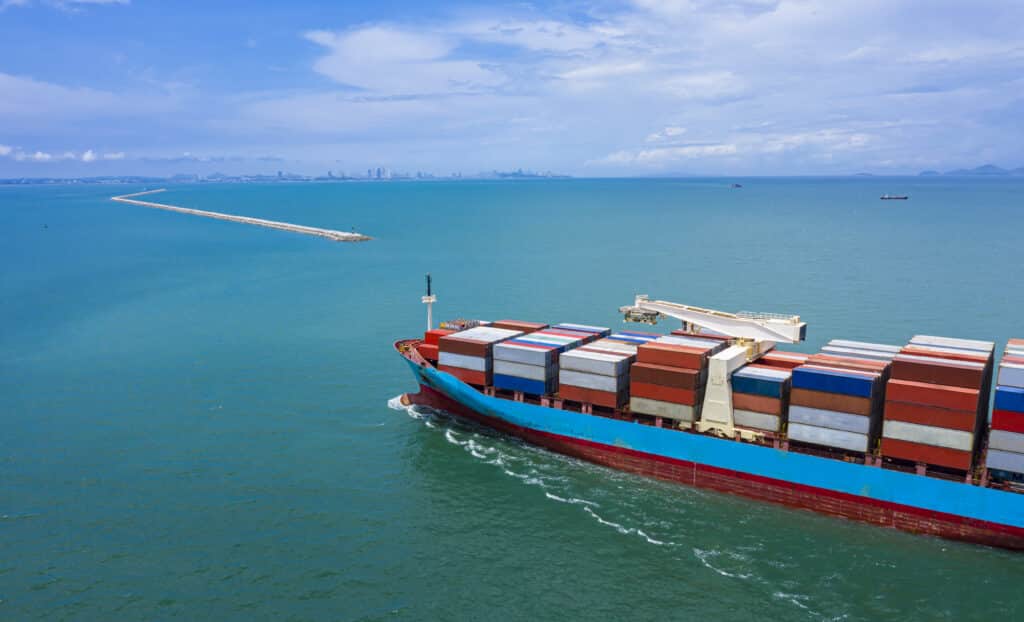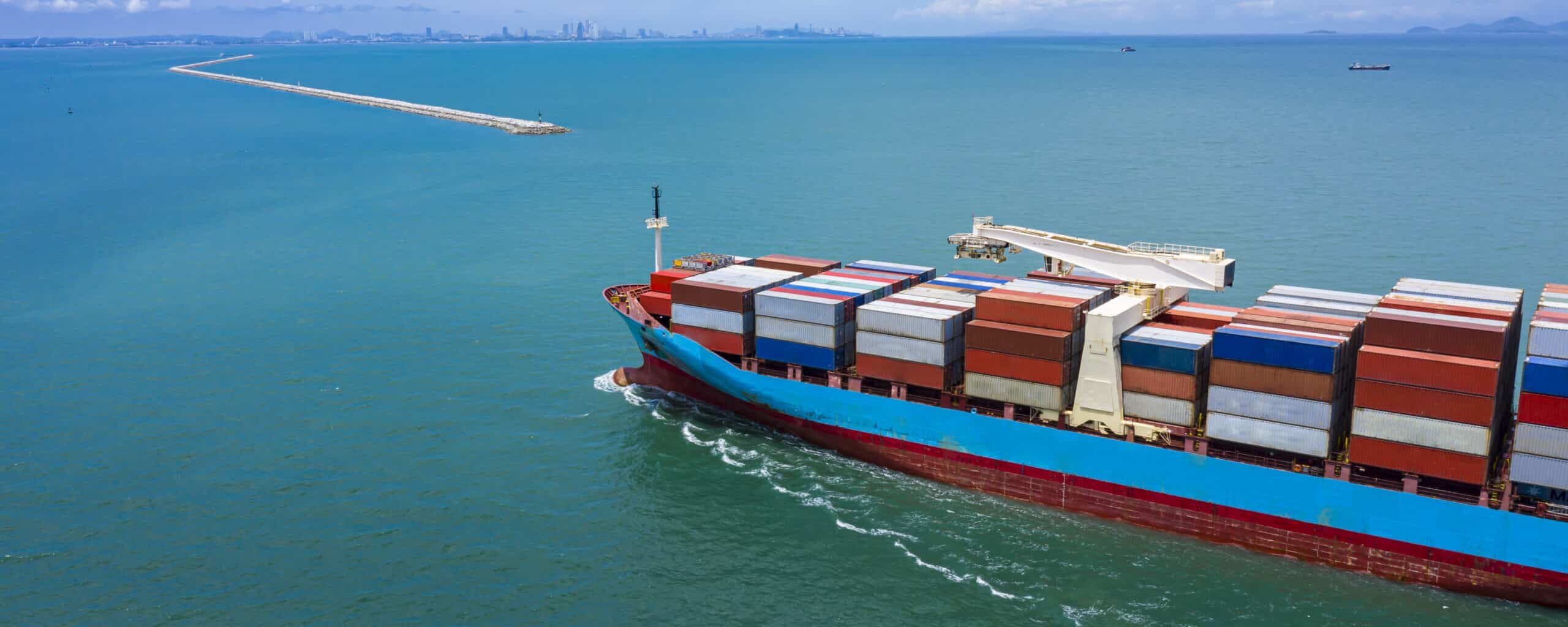With freight delivery rates surging since last year, businesses worldwide are grappling with rising shipping costs.
Ocean freight delivery rates, particularly for shipments from China to the West, have seen sharp increases, leaving many e-commerce sellers and import-heavy businesses feeling the pressure.
These higher costs are cutting into profit margins, forcing companies to rethink their logistics strategies.
But what’s driving these spikes in freight delivery rates? Factors like global demand, shipping capacity constraints, and rising fuel prices are all playing a role.
For businesses, these challenges mean finding creative ways to optimize supply chains and minimize costs while staying competitive in a fast-changing market.
Understanding how to deal with rising freight delivery is crucial for navigating these hurdles!
Why Are Ocean Freight Rates Soaring?
Container shipping rates to Canada and North America from the Far East have skyrocketed, creating significant challenges for businesses relying on imports.
According to the Freightos Baltic Index, ocean freight rates to the West Coast have surged nearly 1,000% since October last year.
The average cost for a 40 HQ container now exceeds $13,000, a staggering figure.
The situation is even more pronounced for the East Coast, where shipping costs have surpassed $16,000 per container.
These rising ocean freight rates are driving up expenses for businesses, impacting profitability and supply chain efficiency.
Understanding the causes of these increases and finding ways to adapt is crucial for businesses to weather the storm.
As companies continue to face these record-breaking costs, strategic planning and innovative logistics solutions will play a key role in mitigating the impact.
Causes of Rising Sea Freight Shipping Charges
The surge in sea freight shipping charges over the past year has been driven by several factors.
From global supply chain disruptions to increased demand for shipping services, the reasons behind the rising costs are complex and interconnected.
This complexity makes it challenging to predict when freight shipping charges might stabilize or return to previous levels.
Here are some of the key factors contributing to higher sea freight shipping charges:
1. Pandemic Problems
As is the case in so many industries around the world, the pandemic has introduced a whole new set of hurdles in the ocean shipping industry.
At the beginning of the pandemic, global trade came to a standstill.
Lockdowns led to factory closings and inoperable ports, which led ocean shippers to cancel and reschedule trips and slower ocean transit times.
Then, as things began to get back to normal, pent-up demand for goods across the globe combined with labor shortages meant large quantities of containers to go out and no one to get them out.
Demand steadily increased while shippers were forced to cancel ships, creating a backlog.
As the virus surges on, new lockdowns in China are leading to more shipping troubles, fueling the freight delivery rates.
Amid these challenges, Newl’s reliable ocean freight services have stood out, ensuring smooth operations even during disruptions.
With competitive freight fees and being an NVOCC, we help businesses navigate these turbulent times with confidence.
2. Container Shortage
The container shortage has made the news several times since the beginning of the pandemic, but it’s not necessarily all Covid 19’s fault.
Despite the reasonings for it, the shortage has made it difficult to even secure a container sometimes, leaving businesses at a loss for inventory.
Trade imbalance is part of the reasoning for the container shortage. For every 3 containers of goods China ships to North America, we only have 1 to send back.
It has led to a container shortage in China, and the scarcity has brought on a fierce battle for control of containers that jacks up container prices further.
The shortage is so bad and the demand for North American products in China so low that many shippers are finding it more lucrative to unload containers and drop the empty containers directly back onto the ship they came in on.
Not allowing the containers to sit empty on North American shores is more cost-effective despite that shipping an empty container generates no revenue and creates expenses.
3. The Suez Canal Disaster’s Domino Effect
Despite being a short-lived disaster, the blockage of the Suez Canal by an Evergreen ocean shipping vessel in March 2021 sent shockwaves through the global shipping market.
The delay caused by the blockage wasn’t limited to the cargo on board the ocean liner that got stuck; hundreds of ships were held up behind the ship run aground.
Experts predict the ripple effects of this disaster are still being felt now which is one of the causes behind rising freight fee.
4. Trade Contention
The US’s trade war with China also plays a role in high shipping costs.
Despite the fact that a new administration has taken over, uncertainty about how it all might play out has led shippers to push goods out faster than they normally would have.
More containers to ship lead to higher prices as the laws of supply and demand dictate.
5. Added Fees by Ocean Shipping Companies
Since the pandemic began, and even before that, importers have been finding new fees on their shipping bills.
The massive quantity of goods being imported into North America has led many shipping companies to add hefty port congestion fees onto their bills starting in August, further raising already surging prices.
The Impact of Rising Freight Delivery Charges on Businesses
Let’s face it. Pretty much every business is importing goods from China.
If they’re not importing directly, they rely on those imported goods for operation or retail sale.
Since more than 60% of global goods are shipped via sea, almost everyone is feeling the pressure right now.
Increased ocean freight delivery charges mean increased expenses, and for industries still struggling to recover from the pandemic and facing down the second wave of lockdowns, those increased expenses can look scary.
They often import Chinese goods because they’re inexpensive enough to leave sellers with a decent profit despite the costs of importing, but with shipping prices like these, is that still the best tactic?
Should they consider more expensive goods that are manufactured closer to home? Is there any way they can combat soaring shipping costs?
Should they pass on these extra costs to customers or try to wait it out and see if the shipping market does a course correction?
There are a lot of questions and fewer answers, but there are some things importers can do to help make shipping more affordable.
Tips to Adapt to Soaring Ocean Freight Rates

For some companies, adapting to the current situation may require a complete overhaul of their supply chain.
This might involve reshoring or nearshoring operations, trends that have been gaining momentum in recent years.
1. Explore Logistics Practices to Cut Costs
To navigate rising shipping expenses, companies can adopt smarter logistics practices:
- Improved Visibility
Better visibility allows businesses to predict the need for containers earlier, enabling them to book ahead and avoid costly spot market rates.
- Adjust Lean Supply Chain Principles
Ordering larger quantities to fill containers can help insulate against stock shortages and reduce the need to ship during peak pricing periods.
2. Diversify Carrier Relationships
Expanding the carrier pool can provide access to more competitive rates.
Building relationships with Newl’s ocean freight forwarders, especially those operating from China to Canada or North American ports, can be invaluable. They can:
- Help secure better shipping rates.
- Offer improved LCL freight quotes.
- Provide critical contacts in turbulent times.
3. Renegotiate Contracts in the Future
For new supply chain contracts, incorporating renegotiation clauses is essential. As the market stabilizes, companies need the flexibility to adapt to more moderate conditions.
4. Passing Costs to Consumers
If ocean shipping costs continue to rise, companies will ultimately need to pass some of these costs onto consumers.
However, most businesses cannot increase prices at the same rate as shipping costs.
Whether the end destination is a manufacturer, retail store, or e-commerce platform, implementing smarter logistics strategies now can help mitigate future price hikes.
5. Partner with Newl for Smarter Logistics Solutions
Navigating today’s volatile ocean shipping market can feel overwhelming, but it doesn’t have to be.
With over 35 years of experience in logistics, Newl has the expertise and industry connections to guide your business through these turbulent times.
As a trusted Non-Vessel Operating Common Carrier (NVOCC), Newl offers reliable and cost-effective ocean freight services tailored to your needs.
Whether you’re shipping full-container loads (FCL) or less-than-container loads (LCL), our team works tirelessly to ensure your goods reach their destination efficiently and affordably.
Why Newl is the Right Choice for Ocean Freight
Shipping your goods across the globe doesn’t have to be complicated.
At Newl, we specialize in making ocean freight straightforward, reliable, and tailored to your business needs.
With over three decades of expertise and a modern approach, we’re here to help you navigate the challenges of today’s logistics landscape with ease.
Here’s why businesses trust Newl:
1. Proven NVOCC Expertise
As a Non-Vessel Operating Common Carrier (NVOCC), we provide end-to-end ocean freight solutions for your shipments.
Experience carrier-level flexibility without extra work. We handle booking and documentation, so you don’t have to.
2. Clear and Predictable Pricing
Hidden fees? Not with us. Newl offers upfront and transparent pricing, so you can plan your operations without any last-minute surprises.
3. Flexible and Scalable Solutions
Whether you’re starting small or managing large-scale shipments, our ocean freight services are designed to adapt and grow with your business.
Looking for a logistics partner who truly understands your needs? Get in touch with us today and see how Newl can make your ocean freight experience seamless and efficient.
Final Thoughts
Rising ocean freight rates can be tough to handle, but with the right approach, businesses can stay strong and competitive.
Simple changes, like improving supply chain visibility or working with different carriers, can go a long way to cutting costs and keeping things running smoothly.
Adapting to these challenges isn’t just about getting through the moment, it’s about setting your business up for long-term success.
Frequently Asked Questions
1. How Do You Calculate Ocean Freight Costs?
To determine the cost of shipping a container via ocean freight, start with the container’s chargeable weight or volume.
Multiply this by the shipping rate per kilogram or cubic meter, depending on the pricing structure.
Don’t forget to factor in additional costs, such as fuel surcharges, port handling fees, and any applicable customs charges.
These elements together form the total freight cost.
2. What Does FOB Mean in Shipping?
FOB, or Free On Board, is a term commonly used in international shipping to specify when the seller’s responsibility for the goods ends.
Under FOB terms, the seller covers the cost of transporting goods to the designated shipping point and ensures they are safely loaded onto the vessel.
After this point, the buyer assumes responsibility for shipping costs, insurance, and any risks associated with the goods.
3. What Are the Sea Freight Trends for 2025?
In 2025, the sea freight industry is projected to experience a 5.2% net growth in capacity, based on insights from the Drewry Container Forecaster.
Sustainability is expected to remain a key focus across ocean freight operations, with companies placing greater emphasis on reducing carbon emissions.
This shift is likely to drive the adoption of eco-friendly technologies and practices, aligning with global efforts to minimize environmental impact.
